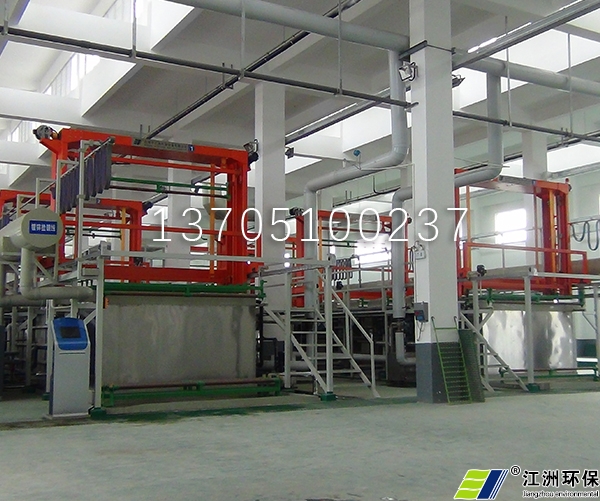fully automatic Electroplating equipment How to clean the production line?
Generally speaking, the method of removing the dirt on the surface of electroplating equipment by mechanical or hydraulic means is called physical cleaning. In addition, it also uses heat energy, current, ultrasonic and ultraviolet ray to decontaminate the automatic electroplating equipment production line. Therefore, all methods of removing surface dirt using thermal, mechanical, optical and electrical principles should be classified as physical cleaning.
The method of removing the dirt on the liquid surface with chemical substances or other aqueous solutions is called chemical cleaning. Common chemical cleaning includes removing rust and scale on metal surface with various inorganic or organic acids, removing color spots on object surface with bleaching oxidant, killing microorganisms with bactericide and disinfectant, and removing dirt or mold attached to object surface.
The advantage of chemical cleaning is that many chemicals react quickly, while the disadvantage is that the improper selection of chemical cleaning solution will cause corrosion and loss to the substrate of the cleaner. Some chemicals are liquids themselves, which are generally prepared in the form of aqueous solutions. Due to the characteristics of good liquidity and strong permeability of liquids, they are easily and evenly distributed on all cleaning surfaces, so they are suitable for cleaning objects with complex shapes, and can not produce "dead corners" without cleaning. Since the discharge of waste liquid from chemical cleaning is the cause of environmental pollution, chemical cleaning must be equipped with sewage treatment equipment. In addition, if the treatment is improper, it will cause harm to the health and safety of workers. Physicochemical cleaning is often carried out on the dry automatic electroplating machine production line, so there is no problem of wastewater treatment. That is, high-pressure washing with a water washing nozzle is used. Since there is no chemical reagent difficult to treat in the discharged water, it is also easier to treat. In contrast, the environmental pollution caused by physical cleaning is less harmful to workers' health, and the physical cleaning has no corrosive effect on the substrate of the cleaning product.
The disadvantage of physical cleaning is that when cleaning equipment with complex structure, its force sometimes cannot reach all parts evenly, and dead corners appear. Sometimes it is necessary to clean the equipment, and losses are caused due to stopping work. In order to improve the power of cleaning, it is often necessary to equip corresponding power equipment, and the disadvantages of large floor area and inconvenient handling.

It is precisely because physical cleaning and chemical cleaning have good complementarity that they are often combined in the production line of automatic electroplating equipment to achieve better cleaning effect.
What are the classifications of plating equipment?
Electroplating is a method of plating a thin layer of other metals or alloys on the surface of some metals by using the principle of electrolysis, Electroplating equipment manufacturer The electrolytic method is used to attach a layer of metal film on the surface of metal or other materials to prevent metal oxidation (such as rust), improve wear resistance, conductivity, reflection, corrosion resistance (copper sulfate, etc.) and enhance aesthetics. The outer layer of many coins is also electroplated. What types of plating equipment can be divided into?
If classified by purpose, it can be divided into:
① Protective coating;
② Protective decorative coating;
③ Decorative coating;
④ Restorative coating;
⑤ Functional plating.







